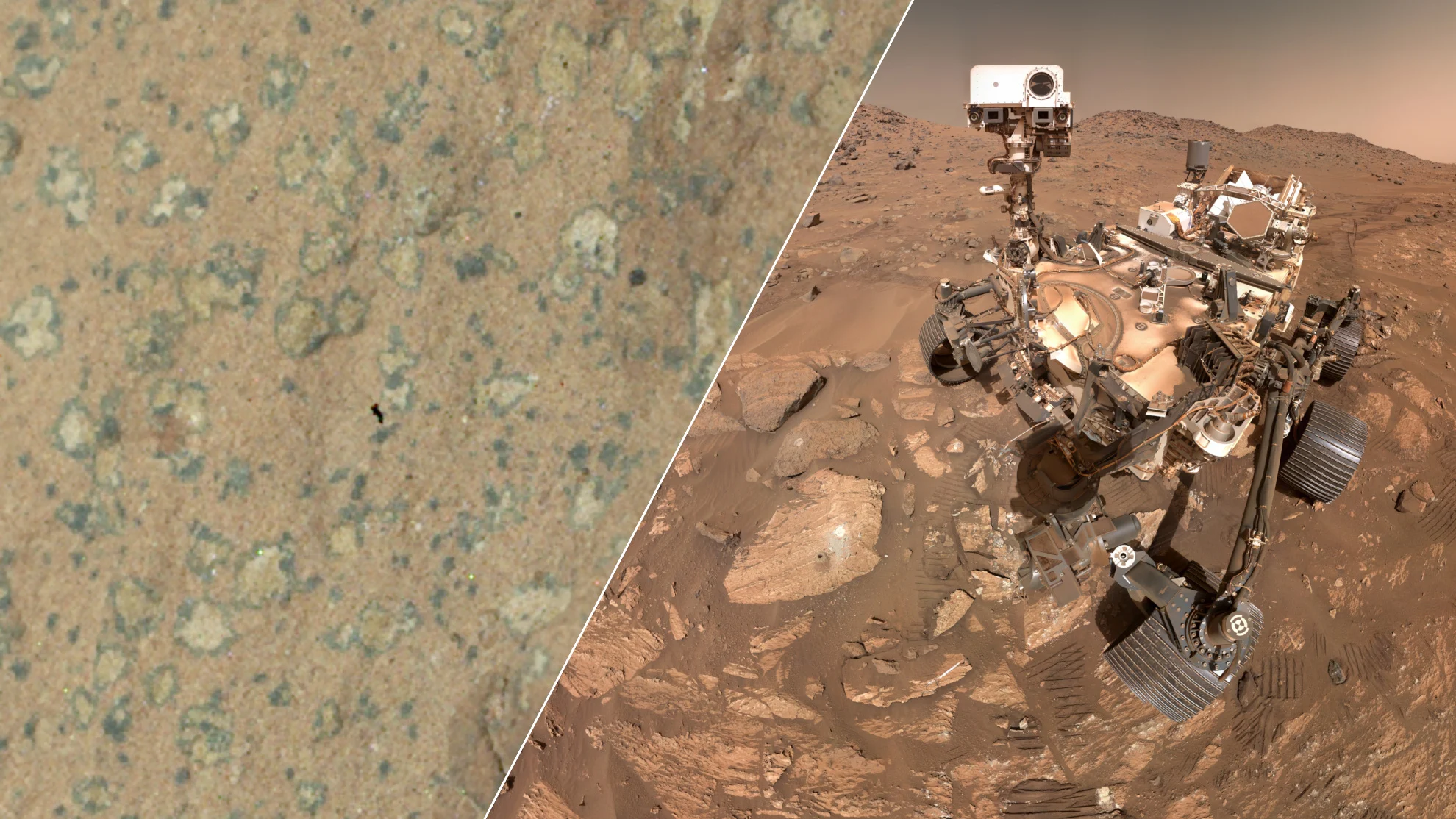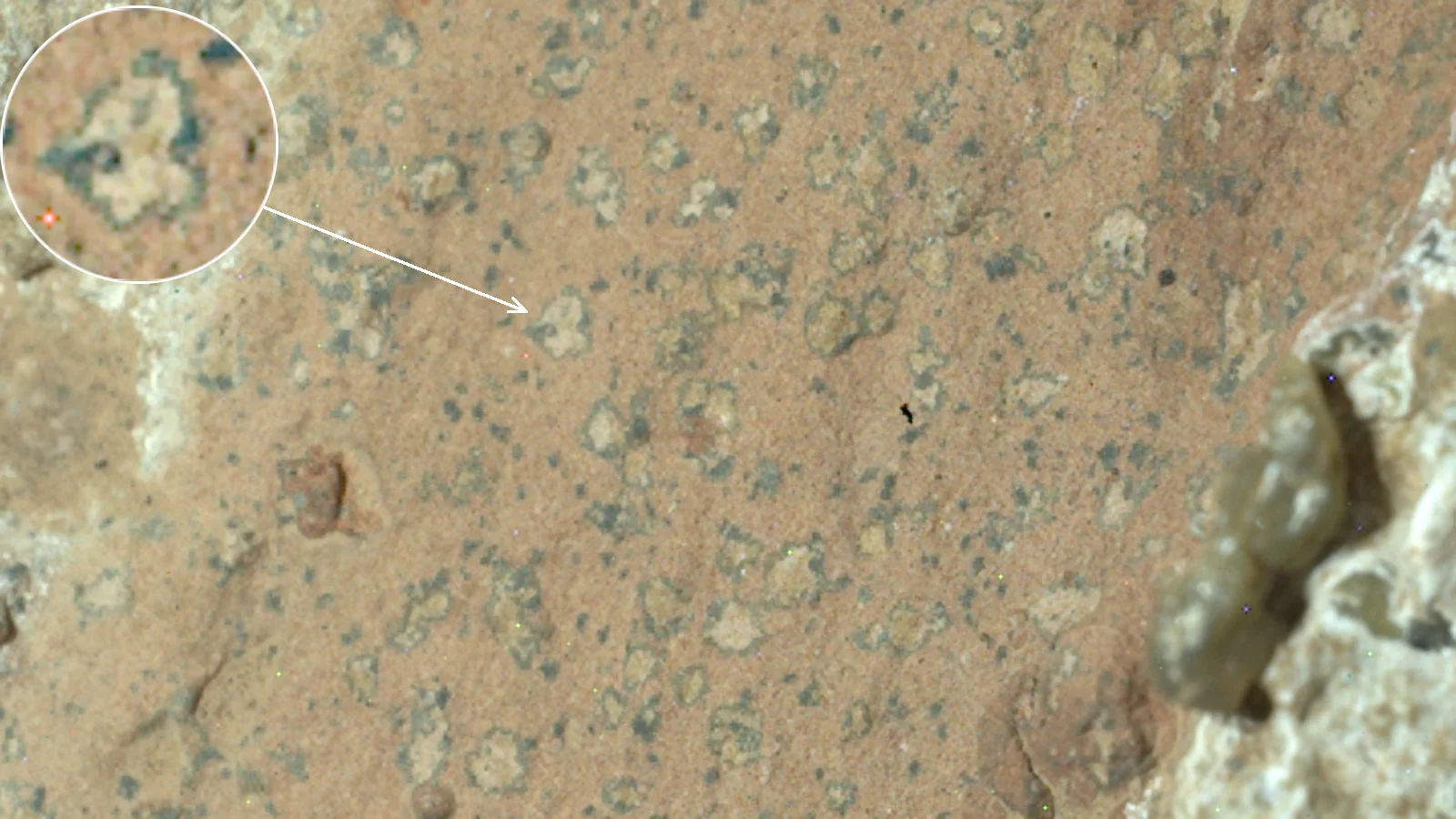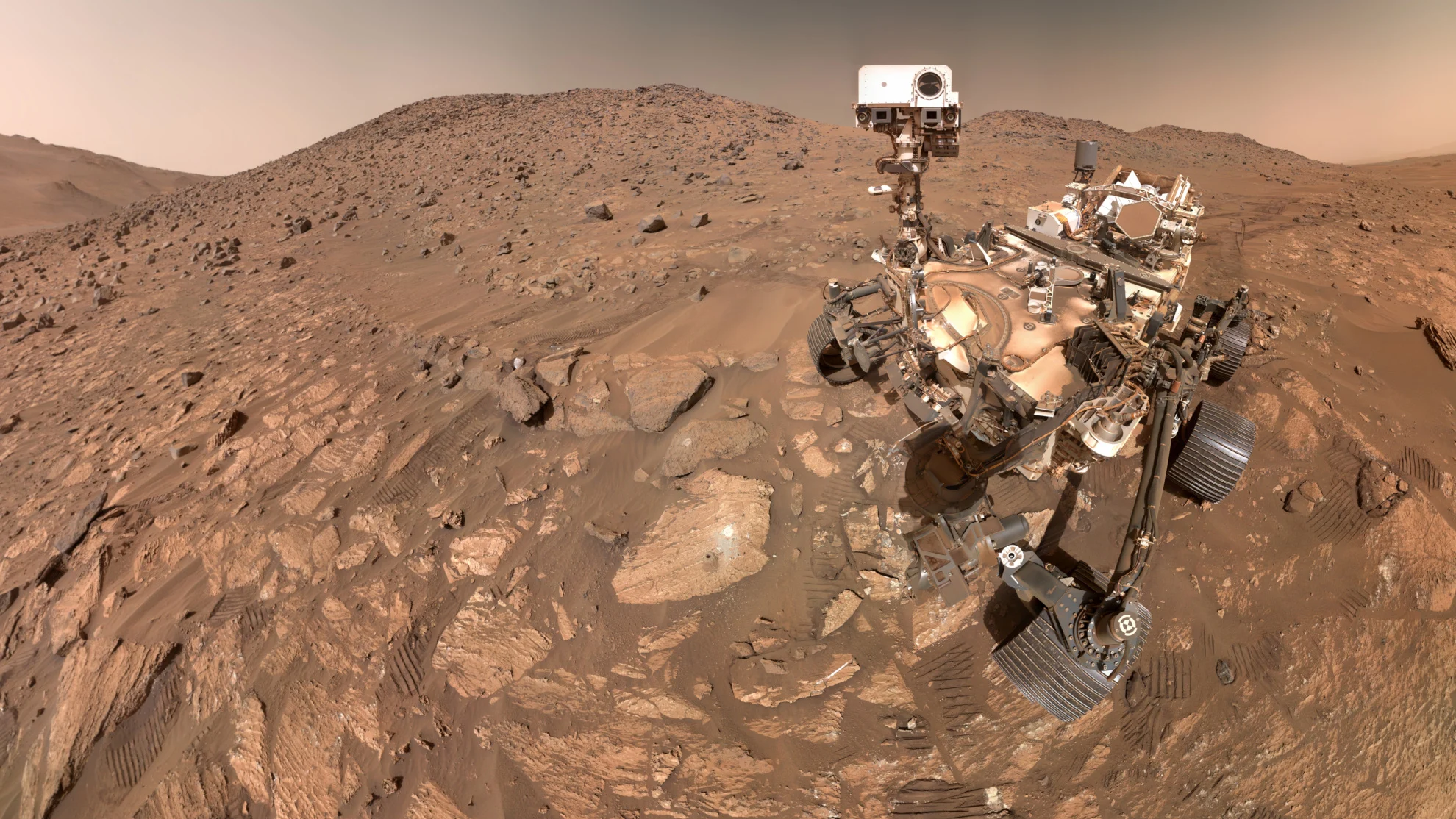
'Leopard-spotted' rock may be a sign of ancient life on Mars
This is the most puzzling, complex, and potentially important rock yet investigated by NASA's Perseverance rover.
NASA's Perseverance rover discovered a rock that may hold the proof that microbial life once existed on Mars.
Over the years, NASA rovers have investigated countless rocks on Mars. In doing so, they have slowly built up a towering heap of evidence that the cold, desolate planet we see today was much more like Earth in its distant past. It was warmer, with a thicker atmosphere, and it had free-flowing water on its surface that could have supported life as we know it. One thing that has eluded these missions, though, was any definite sign that anything actually lived in that more hospitable environment.
Then, in July 2024, while exploring an ancient dry river valley called Neretva Vallis, Perseverance happened upon 'Cheyava Falls', a rock that peaked the mission team's interest.

This image, taken by the WATSON (Wide Angle Topographic Sensor for Operations and eNgineering) camera on Perseverance's SHERLOC (Scanning Habitable Environments with Raman and Luminescence for Organics and Chemicals) instrument, shows the surface of the rock nicknamed "Cheyava Falls" by the mission team. (NASA/JPL-Caltech/MSSS)
"Cheyava Falls is the most puzzling, complex, and potentially important rock yet investigated by Perseverance," Ken Farley, Perseverance project scientist of Caltech in Pasadena, said in a NASA press release.
NASA scientists are interested in this one particular rock because it has three distinct properties that, according to Morgan Cable, a scientist on the Perseverance team, they've never seen together on Mars before.
The first is the two long bands of light-coloured rock on either side of the above view. They are made up of calcium sulphate (gypsum) and indicate that water once flowed through the rock.
The second is the detection of organic compounds in the darker reddish band of rock by Perseverance's SHERLOC (Scanning Habitable Environments with Raman and Luminescence for Organics and Chemicals) instrument. Organic compounds are those containing carbon, an essential building-block for life as we know it. While it is possible that these compounds were the result of some geological process, if microbes did live in those sediments and later died when the planet dried up, this is the kind of evidence they would leave behind.

This zoomed in view of the reddish band on Cheyava Falls shows the leopard spots in more detail, with an inset image (top left) highlighting one in particular. (NASA/JPL-Caltech/MSSS/Scott Sutherland)
The third property is the tiny 'leopard spots' seen dotted throughout the layer of reddish rock. These irregularly-shaped, millimetre-sized spots are made up of lighter-coloured rock surrounded by a dark border. Perseverance's PIXL (Planetary Instrument for X-ray Lithochemistry) instrument determined that the sediments in those dark borders were composed of iron and phosphate.
According to NASA, similar spots have been found on Earth where chemical reactions change a rock's colour from red to white, releasing iron and phosphate in the process. On this planet, these same chemical reactions are known to be used by living microbes to produce energy.
Each of these features, on their own, is not strong evidence of past life. However, finding all three together in the same rock makes this a much more intriguing discovery.

This annotated view of "Cheyava Falls" highlights one of the numerous 'leopard spots' embedded in the darker layer, which indicate chemical reactions that could have supported ancient microbial life, but also a small deposit of olivine, a mineral that forms from the crystallization of magma. (NASA/JPL-Caltech/MSSS)
One aspect of this find that puzzles the team, though, is the presence of olivine crystals, a type of rock that forms from cooling magma.
"On the one hand, we have our first compelling detection of organic material, distinctive colorful spots indicative of chemical reactions that microbial life could use as an energy source, and clear evidence that water — necessary for life — once passed through the rock. On the other hand, we have been unable to determine exactly how the rock formed and to what extent nearby rocks may have heated Cheyava Falls and contributed to these features," Farley explained.
Seeing these green crystals embedded within the rock brings up the possibility that the exciting features of Cheyava Falls may not have been produced by life. Instead, they could be the result of chemical reactions at extremely high temperatures associated with volcanic activity.

This 'selfie' image, composed of 24 different images taken by Perseverance's WATSON camera, shows the rover at Cheyava Falls, just after it drilled a sample of the rock for future investigation. (NASA/JPL-Caltech/MSSS)
"We have zapped that rock with lasers and X-rays and imaged it literally day and night from just about every angle imaginable," Farley said. "Scientifically, Perseverance has nothing more to give. To fully understand what really happened in that Martian river valley at Jezero Crater billions of years ago, we'd want to bring the Cheyava Falls sample back to Earth, so it can be studied with the powerful instruments available in laboratories."
To that end, Perseverance drilled a sample of Cheyava Falls, which has been secured inside the rover for now. The hope is that this, along with the rover's other samples, can be picked up by some later Mars mission and flown back to Earth for study.











